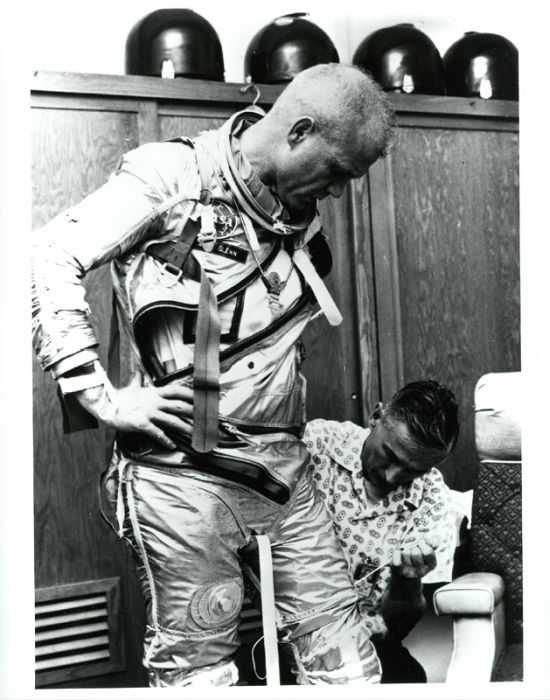|
|
History: NASA Archive Photography
|
The first person to stand on the Moon was Neil Armstrong and after him Buzz Aldrin while Michael Collins orbited above. Five subsequent Apollo missions also landed astronauts on the Moon, the last in December 1972. In these six Apollo spaceflights twelve men walked on the Moon. These missions returned a wealth of scientific data and 381.7 kilograms (842 lb) of lunar samples. Experiments included soil mechanics, meteoroids, seismic, heat flow, lunar ranging, magnetic fields, and solar wind experiments. The Moon landing marked the end of the space race and as a gesture, Armstrong mentioned mankind when he stepped down on the Moon.
Apollo set major milestones in human spaceflight. It stands alone in sending manned missions beyond low Earth orbit, and landing humans on another celestial body. Apollo 8 was the first manned spacecraft to orbit another celestial body, while Apollo 17 marked the last moonwalk and the last manned mission beyond low Earth orbit. The program spurred advances in many areas of technology peripheral to rocketry and manned spaceflight, including avionics, telecommunications, and computers. Apollo sparked interest in many fields of engineering and left many physical facilities and machines developed for the program as landmarks. Many objects and artifacts from the program are on display at various locations throughout the world, notably at the Smithsonian's Air and Space Museums.
- Skylab (1973–1979)
Skylab was the United States' first and only independently built space station. The 169,950 lb (77,088 kg) orbital workshop was launched on May 14, 1973, into a 235-nautical-mile (435 km) orbit inclined at 50° to the equator. Damaged during launch by the loss of its thermal protection and one electricity-generating solar panel, it was repaired to functionality by its first crew. It was occupied for a total of 171 days by 3 successive crews in 1973 and 1974. It included a laboratory for studying the effects of microgravity, and a solar observatory. NASA planned to have a Space Shuttle dock with it, and elevate Skylab to a higher safe altitude, but the Shuttle was not ready for flight before Skylab's re-entry on July 11, 1979.
|
|









